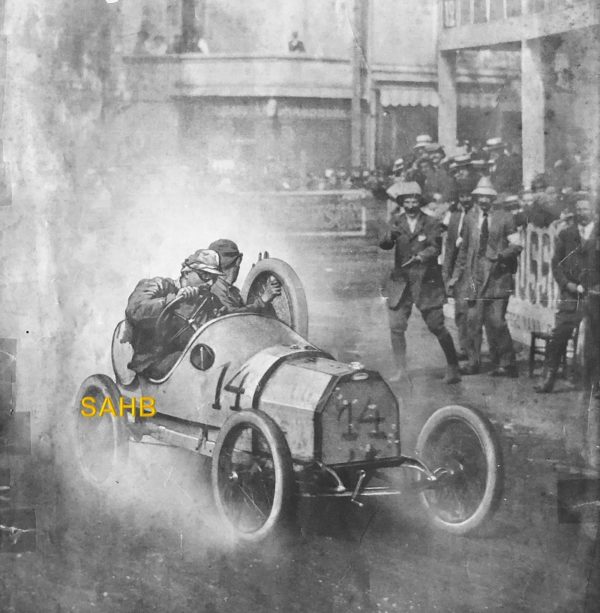
The Grand Prix de France was held on 23 July 1911 at the Circuit de la Sarthe near Le Mans. It was held over twelve laps – a race distance of 655.2 km. It was organised by the Automobile Club de la Sarthe et de l’Ouest (ACSO) and was therefore not an official French Grand Prix – until 1967 that was always under the name Grand Prix de l’ ACF. The Grand Prix had not been held in the previous two years due to a lack of interest on the part of motor manufacturers. Faced with loss of face once more in 1911 from a continuing paucity of entries, the ACF accepted the offer from the ACSO to host this unofficial event.
The field was still weak: six of the 14 cars were so-called voiturettes, and there were only eight true Grand Prix cars, most of them older models. The Fiat of the eventual winner Victor Hémery was an ordinary touring car that had been rejected by a Parisian customer and was sent to the race without its planned coachwork.
Despite this inauspicious start the race is notable for the first circuit success by a Bugatti. Ernest Friderich drove the car into second place (admittedly two laps behind the winner) and ahead of several cars with much larger displacements.
Here was a very early example of the pur-sang Bugatti. This small, light car was powered by a 1.4-litre four-cylinder engine with single overhead camshaft and two valves per cylinder. Its precise steering and lightness of control were a revelation for the time, neatly summed up in later years by Cecil Clutton with the words: “It is essentially to be controlled with fingers and toes rather than hands and feet. The gear lever is flicked rather than pushed or pulled.”
That comment on the gear lever was not surprising. The gearbox on this 8-valve Type 13 had its constant-mesh gears at the back rather than the front of the box. This meant that only the light mainshaft had to speed up or slow down when changing gear – not the constant mesh gears and the layshaft. This design, possibly influenced by the box in Stefanini’s small and light Isotta Fraschini FE racer of 1908, was used by all subsequent Grand Prix Bugattis up to the 1933 Type 59 – and all these cars were renowned for their speedy gearchange.
After the Great War Bugatti’s racing, sports and luxury cars established and grew the company’s unassailable reputation. But this modest result for the 1911 Bugatti in a minor race played a vital part in setting Bugatti on the road to greatness.
Photo courtesy of The Richard Roberts Archive: www.richardrobertsarchive.org.uk







Leave a Comment